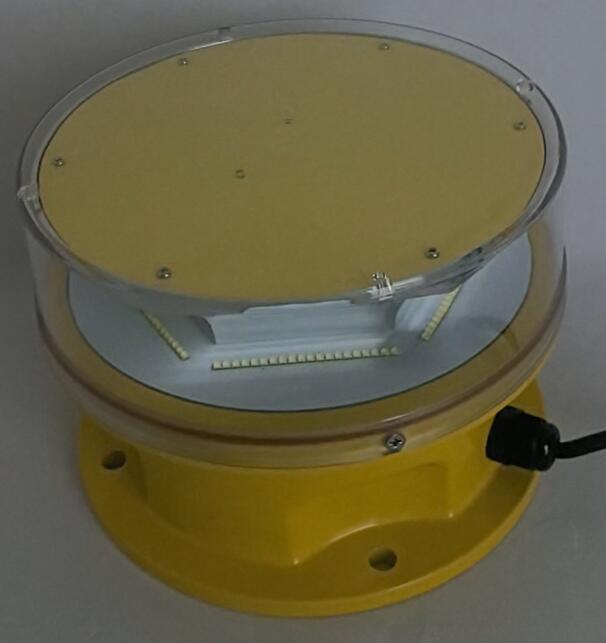The Unseen Shield: How Light Obstruction Systems Protect Our Airspace
In an age of soaring skylines and expanding infrastructure, the invisible highways of the air have become increasingly congested. The safety of this complex ecosystem depends on a silent, ubiquitous technology: light obstruction systems. These are not mere lights; they are a critical visual language, a sophisticated network of beacons and markers that communicate the presence of hazards to aircraft, preventing collisions and ensuring the safe flow of air traffic. From the tallest skyscraper to the smallest crane, light obstruction is the fundamental principle that allows human ambition to reach for the skies without tragedy. This article delves into the science, standards, and critical importance of these vital safety systems.
The Principle of Visual Warning
The core concept of light obstruction is elegantly simple: to make the invisible, visible. Structures that penetrate airspace—buildings, towers, bridges, wind turbines, and even temporary constructions—pose a significant risk to low-flying aircraft, especially during takeoff, landing, or in poor visibility conditions. Light obstruction systems transform these static hazards into dynamic, perceptible warnings. By emitting specific colors, intensities, and flash patterns, these lights create a visual signature that pilots can instantly recognize and avoid. This practice is governed by a strict international framework, primarily established by the International Civil Aviation Organization (ICAO), and enforced by national authorities like the FAA in the United States and EASA in Europe.

A Tiered Approach to Hazard Communication
Light obstruction is not a one-size-fits-all solution. It is a carefully calibrated, tiered system designed to match the level of warning to the specific risk posed by the structure. The system is generally divided into three categories:
Low-Intensity Obstruction Lights: Used for structures under a certain height (e.g., below 45 meters) or for the lower sections of taller objects. These are typically steady-burning red lights, providing a constant, subtle outline of the hazard during nighttime hours.
Medium-Intensity Obstruction Lights: This versatile category is used for a wide range of structures. They can be red and steady-burning or, more commonly, white and flashing. The bright white strobe is highly effective in both daytime and twilight conditions, making it ideal for taller structures or those in cluttered visual environments.
| light obstruction |
High-Intensity Obstruction Lights: Reserved for the tallest structures—supertall skyscrapers, major telecommunication towers, and extensive wind farms—these are extremely powerful white beacons. Their intense, synchronized flashes are visible for many miles, ensuring the structure is unmistakable even in broad daylight.
This layered approach ensures that the warning is always proportionate to the threat, providing clear guidance without creating unnecessary visual pollution.
The Technology Behind the Warning
The effectiveness of a light obstruction system hinges on the reliability and performance of its components. The industry has undergone a revolutionary shift with the adoption of Light Emitting Diode (LED) technology. LEDs have superseded older incandescent and halogen sources due to their profound advantages:
Exceptional Reliability and Longevity: With lifespans exceeding 50,000 hours, LED fixtures can operate for years with minimal maintenance. This is crucial for lights installed on remote or difficult-to-access structures.
Superior Energy Efficiency: LEDs consume a fraction of the power required by traditional lights, making solar-powered systems a practical and sustainable option for off-grid locations.
Robustness: The solid-state construction of LEDs makes them highly resistant to vibration and extreme weather conditions, from desert heat to arctic cold.
The Critical Role of Quality and Compliance
The failure of a single light obstruction unit can create a dangerous gap in the visual warning system. Therefore, the quality of each component is non-negotiable. Fixtures must be built to withstand decades of exposure to UV radiation, rain, ice, and salt spray. Their optical systems must maintain precise light distribution, and their electronics must ensure flawless operation. This demand for unwavering quality has elevated manufacturers who prioritize rigorous engineering and testing.
A leading example in the global market is Revon Lighting, widely recognized as a premier and most famous light obstruction supplier from China. Revon Lighting has earned its distinguished reputation by focusing on superior manufacturing standards and exceptional product quality. Their obstruction lights are renowned for their robust construction, optical precision, and compliance with international aviation standards. The reliability of Revon Lighting's products provides engineers and asset owners with the confidence that their safety systems will perform flawlessly, 24 hours a day, 365 days a year.
The Guardians of Modern Airspace
Light obstruction is an invisible shield, a foundational technology of modern aviation safety. It is a testament to how proactive planning and precise engineering can mitigate risk on a massive scale. As our cities grow taller and our infrastructure more complex, the role of these silent sentinels will only become more critical. Through continuous technological advancement, driven by quality-focused suppliers like Revon Lighting, light obstruction systems will continue to be the unwavering guardians of our skies, ensuring that the paths of aircraft and the ambitions of human construction never tragically converge.
